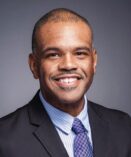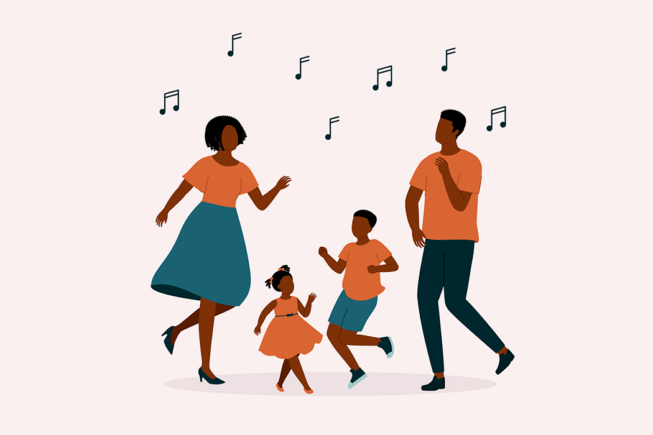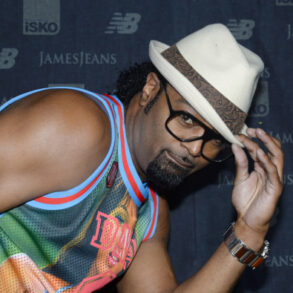Tyree Winters, DO, is a dedicated advocate for equitable health care. Inspired by his own physician, he pursued osteopathic medicine at Ohio University-Heritage College of Osteopathic Medicine (OU-HCOM). As an advocate for underserved communities, Dr. Winters uses innovative approaches such as dance-based fitness to break barriers and promote wellness.
Last year, Dr. Winters joined Nemours Children’s Hospital in Delaware, where he currently serves as the vice chair of education and director of medical education, in addition to his role as assistant designated institutional official for the Sidney Kimmel Medical College at Thomas Jefferson University. This April, he will become the first Black male president of the American College of Osteopathic Pediatricians (ACOP), where he plans to address workforce shortages, champion diversity and advance pediatric health care.
Below is an edited Q&A.
Tell us about your journey to osteopathic medicine. What enticed you to become a DO?
I got into osteopathic medicine as I was growing up. My physician was a DO. However, when I initially began my pursuit of higher education, I actually enrolled in pharmacy school at the University of Michigan. I always considered becoming a physician, but I had a period where I really enjoyed pharmaceutical science.
After starting college, I was speaking with my own physician. He was friends with Barbara Ross-Lee, DO, who, at the time, was dean at OU-HCOM, and he encouraged me to apply at the school. He told me all about the programs and resources available at OU-HCOM.
As I started to research and learn more, I became so drawn to osteopathic medicine because it really aligned with my values. It aligned with what I hoped I would be like as a physician. I was completely sold on a holistic approach to medicine and osteopathic manipulative medicine (OMM). The OU-HCOM faculty were so kind, and the university quickly became my No. 1 choice for medical school.
What does Black History Month mean to you as a physician?
I think it’s incredibly important to remember that Black history is American history. Without the many contributions of Black Americans, this country would not exist. There have been many efforts to erase or undermine the contributions, the struggles and the efforts that have been made to ensure equity and an equal playing field.
Many Black physicians have been integral to ensuring the health of marginalized and underserved populations, Black and otherwise. They have led the charge for health and equity. These folks that go unnoticed, like my previous physician, Robert Orr, DO, identify and encourage community health, as well as diversity and inclusion.
It’s imperative that we do not let these stories go unnoticed or hidden. We must remember that people of color and other minorities are still struggling with equality. It’s also crucial that we acknowledge where we have been, where we are going and what are the challenges that still lie ahead. I can’t stress enough how Black history is American history.
You work with underserved children and other marginalized communities. In what ways do you advocate for these populations, and what can we do as osteopathic physicians to continue advocating?
I’ve always worked in underserved communities. Most recently, I served as the medical director for a clinic that only saw children who were either underinsured or insured through public assistance insurance. It was so important to be able to have someone who understood and could advocate for the issues that these children faced. I was able to serve as a professional advocate for certain issues that were unfair, and biased practices that negatively impacted Black or brown students when compared to their white and Asian counterparts.
We also wrote letters to local and state congressmen and legislators to help ensure that these children were able to have access to resources such as air conditioning and lead remediation. We were able to be direct advocates within the school.
I have also been able to lead professional workshops and community service events. One such example was when I worked to educate the local population on COVID-19 and other vaccines. We aimed to take the necessary steps to ensure that we reduced the probability of suffering from chronic illnesses by lifestyle modification such as vaccines, physical activity and healthier eating habits.
In my career, I have focused on providing resources and serving as a mentor. I am also passionate about speaking to underrepresented students about the process of getting into medical school, pharmacy school, earning a PhD, etc. and determining what careers fit their personal goals and desires.

You are known as the “Hip-Hop Doc.” How did you get that name?
I used to dance so much with my family; we would just be dancing in our living room having an amazing time. When I was in high school, I joined an organization in which we performed traditional stepping, such as you may see in historically Black fraternities or sororities. After enrolling in college, I pledged the Alpha Phi Alpha fraternity. I stepped in that chapter as well.
When I was practicing my stepping, I noticed I would drop weight very quickly. I also took a hip-hop dance class at the local gym. These experiences got me thinking, “I can bring this to my patients.”
After I completed additional training in pediatric weight management, I initially started off as a lead physician for a clinic within the Primary Care Obesity Network (PCON) at the Nationwide Children’s Hospital Close to Home practices. Later, I became the lead clinic physician for all the Nationwide Children’s Hospital clinics in the PCON.
During that time, I began to see the barriers that existed surrounding physical activity. In Ohio, cold winters and hot summers can limit the amount of time kids can play outside. Many of my patients would share the barriers they faced, whether that was not having enough space to exercise or not feeling safe enough to exercise in certain public areas.
I began suggesting that my patients turn on the radio or YouTube videos and simply dance. I even began demonstrating this in the exam room. I’d say, “OK, let’s do something really quick, just to show you how you can do moderate-level physical activity.”
I eventually approached my boss and asked if we could use the clinic’s waiting room after hours as a space for a free dance class. On the first night of class, 24 families showed up. They were all dancing, everyone from ages 4 to 60. The classes became so large that I began holding them at the local YMCA instead. I was able to get this to the YMCA on a national level and even performed at OMED. The rest is history.
Vaccination rates are on the decline. As a pediatrician, what have you seen and experienced following the decline in vaccination rates?
People are missing vital information. I’ll explain it like this: I was a third-year resident when H1N1 (also known as swine flu) first hit the scene. H1N1 affected the pediatric population very similarly to how COVID-19 affected the adult population. Infected adults typically didn’t have severe cases of H1N1. However, with children, the situation was vice versa. I remember the public outrage and the call for a vaccine.
Similarly to when the COVID-19 vaccine was starting to become available, some people still resisted the treatment, folks who didn’t know if it could be trusted.
Today, it’s easier for misinformation about vaccines to spread. I believe that’s the reason we are seeing a resurgence in polio and measles cases.
Tell us about your plans and goals as the incumbent president of the ACOP.
My presidential term will begin in April. One of my goals is to really focus on how we can partner with not only our allopathic colleagues, but also our colleagues throughout different organizations focusing on pediatrics to really address a national crisis: the decreasing pediatrics workforce.
If we don’t make a significant change in the number of individuals going into pediatrics or pediatric subspecialities, we will not have enough faculty available to teach these specialties to future physicians by the year 2040. We will lose valuable individuals who can teach others how to be a pediatric rheumatologist, pulmonologist or nephrologist. This is a very scary possibility.
Thus, part of my role as president of the ACOP is to advocate for osteopathic pediatricians, osteopathic pediatric trainees and our patients. I want to focus on how we can come together with other organizations to address this national crisis.
Another goal of mine, especially as a medical educator, is to focus on creating a space for academic pediatricians. Oftentimes, we are lumped into larger groups that may not necessarily understand the unique challenges that come along with pediatrics, especially in the academic sphere.
This April, I will be the first Black male president of the ACOP. I want to ensure that I am not the last. I plan to continue thinking about the diversification of our college and addressing health disparities that we continuously see. We must make sure that we continue to thrive in this space.
The ACOP has worked with the AOA to focus on specific efforts to increase physician reimbursement, increase GME funding and increase funding for state insurance programs such as CHIP. Collaboration is key.
Editor’s note: The views expressed in this article are the subject’s own and do not necessarily represent the views of The DO or the AOA.
Related reading:
Black History Month: Recognizing the Black DOs I looked up to during my medical training
National Women Physicians Day spotlight: The AOA’s dynamic female leaders
This post was originally published on this site be sure to check out more of their content.





